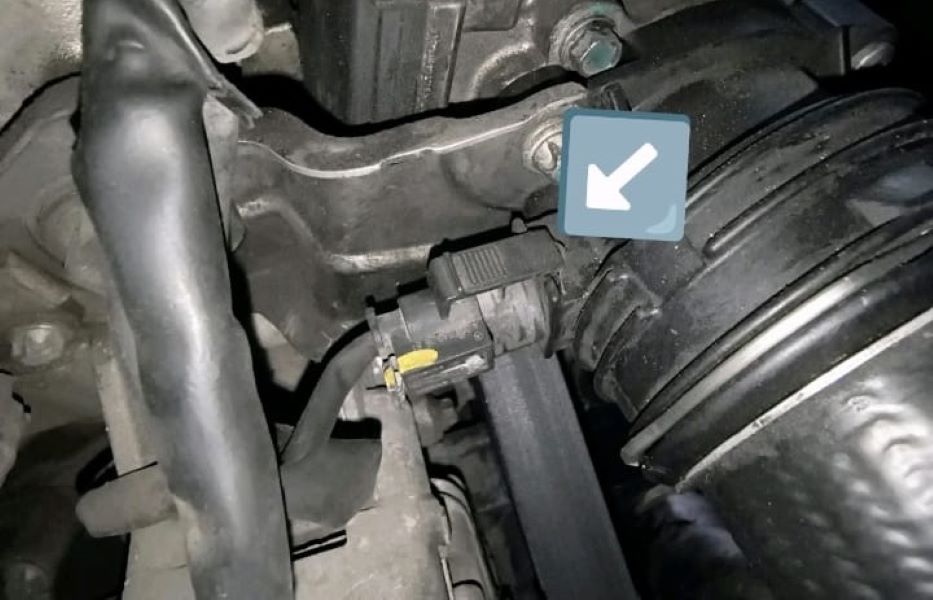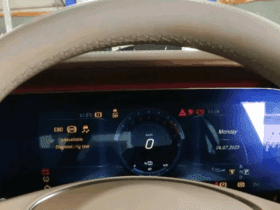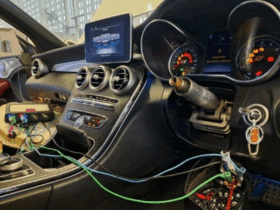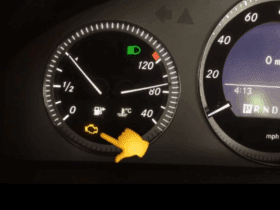Table of Contents
How to Fix P0073 in Mercedes-Benz S Class 222: Case Study & Troubleshooting Guide
When a Mercedes-Benz S Class 222 equipped with the OM642 engine comes into your workshop with its AC condenser fan running at full speed from the moment you start the engine, and it won’t stop until the ignition is switched off; this can feel alarming to both owners and technicians.

In this article, we’ll explore a real case study involving the diagnostic trouble code (DTC) P0073, which led to this unusual fan behavior, and we’ll explain how to diagnose and resolve the problem effectively.
Case Study: P0073 in Mercedes-Benz S Class 222
Vehicle:
- – Model: Mercedes-Benz S Class (W222)
- – Engine: OM642 (V6 diesel)
- – Complaint: AC condenser fan immediately starts at maximum speed when the engine is turned on and continues to run until the engine is switched off.
Observations:
When the customer arrived at the workshop, technicians noticed the following:
– The fan kicked in at maximum speed as soon as the engine started.
– The fan stayed on continuously, even at idle and under no load.
– Turning off the ignition stopped the fan immediately.
These symptoms typically point to the Electronic Control Unit (ECU) interpreting dangerously high temperature conditions, even if the vehicle is actually cold — and thus running the fan in failsafe mode to protect the engine, transmission, and air-conditioning components.
Diagnostic Procedure: Confirming P0073
1. Scan Tool Connection
- – A diagnostic scan tool was connected to the vehicle’s OBD-II port to retrieve stored fault codes.
- – The scan revealed the DTC P0073 – Charge Air Temperature Sensor, Signal Implausible.
2. What Does P0073 Mean?
- – The P0073 code in Mercedes-Benz refers to implausible or invalid data from the charge air temperature sensor (B17/8).
- – This sensor is responsible for measuring the temperature of the air after it passes through the charge air cooler (intercooler). The ECU uses this data to adjust fueling, boost, and cooling system operation.
- – If the ECU detects an out-of-range or missing signal, it assumes the intake air is extremely hot, a condition which could damage the engine, and immediately activates the cooling fan at maximum speed as a protective measure.
Root Cause: Faulty Charge Air Temperature Sensor
Upon inspection:
- – The Charge Air Temperature Sensor (B17/8) was located downstream of the charge air cooler.
- – The connector to the sensor was found loose and partially disconnected.
- – Without a solid connection, the ECU received no valid signal, triggering the P0073 code and emergency fan operation.
After securely reconnecting the sensor plug, the fault code was cleared, and the fan behavior returned to normal.

Troubleshooting Steps for P0073
If you encounter P0073 with a high-speed fan on a Mercedes-Benz S Class 222, here’s a systematic approach:
#1 Read Fault Codes
- – Use a proper diagnostic scanner (like XENTRY for Mercedes) to read the ECU memory.
- – Verify if P0073 is stored, along with any other related codes.
#2 Inspect the Sensor and Connector
- – Locate the Charge Air Temperature Sensor (B17/8).
- – Check for loose, corroded, or damaged connectors.
- – Look for broken, frayed, or shorted wiring.

#3 Test the Sensor
- – Measure the sensor resistance or voltage according to manufacturer specs.
- – Replace the sensor if it reads out of specification or shows an open circuit.
#4 Clear Codes and Test
- – Once the repair is complete, clear all stored codes.
- – Start the engine and observe fan behavior.
- – Monitor live data from the sensor to ensure it is sending correct temperature values.
Other Possible Causes of High-Speed Fan Operation
While P0073 was the culprit in this case, Mercedes-Benz vehicles can exhibit similar symptoms for other reasons. If P0073 is not present, consider these possibilities:

Low Refrigerant Pressure
If the air conditioning system is low on refrigerant, the ECU may run the fan at high speed to avoid damage to the compressor and maintain pressure.
Coolant Temperature Sensor Fault
A defective coolant sensor could falsely report high engine temperatures, prompting the ECU to engage the fan at full speed.
AC Pressure Sensor Failure
An incorrect signal from the AC high-pressure sensor could mimic an overpressure situation, again activating maximum cooling.
Wiring Harness Damage
Poor grounds, open circuits, or shorts in the wiring harness to any of the above sensors can confuse the ECU and cause the fan to run continuously.
Fan Control Module or Relay Malfunction
Sometimes the issue lies directly in the fan control module or relay, which could stick in the “on” position.
Software/ECU Logic Errors
In rare cases, a software update or reprogramming may be necessary if the ECU logic fails to recognize valid sensor data.
Why Does the Fan Default to Maximum Speed?
In Mercedes-Benz vehicles, the ECU is designed with protective logic. When it loses trustworthy temperature data; whether from the charge air sensor, coolant sensor, or AC system; it assumes the worst-case scenario (extremely high temperatures) and runs the fan at full speed.
This protects the engine, turbocharger, intercooler, and AC system from potential overheating damage.
Final Thoughts
In our case study of a Mercedes-Benz S Class 222 with an OM642 engine, the root cause of the P0073 error and excessive fan speed was simply a loose connector on the charge air temperature sensor. Reconnecting it and clearing the fault code resolved the issue completely.
However, because high-speed fan operation can result from a variety of factors, it’s essential to follow a structured diagnostic procedure:
– Read fault codes.
– Inspect sensor connections and wiring.
– Verify sensor output against specifications.
– Check other possible systems (AC, coolant, fan module) if necessary.
By understanding what P0073 means and how it affects your vehicle, you can approach the problem with confidence, avoid unnecessary part replacement, and restore your Mercedes-Benz to smooth, quiet operation.
Pro Tip:
If you’re a technician or DIY enthusiast working on Mercedes vehicles, always start with live data checks and visual inspections before replacing parts. The most common causes of P0073 are loose connectors or damaged wiring; both of which cost nothing to fix if caught early.






Leave a Reply